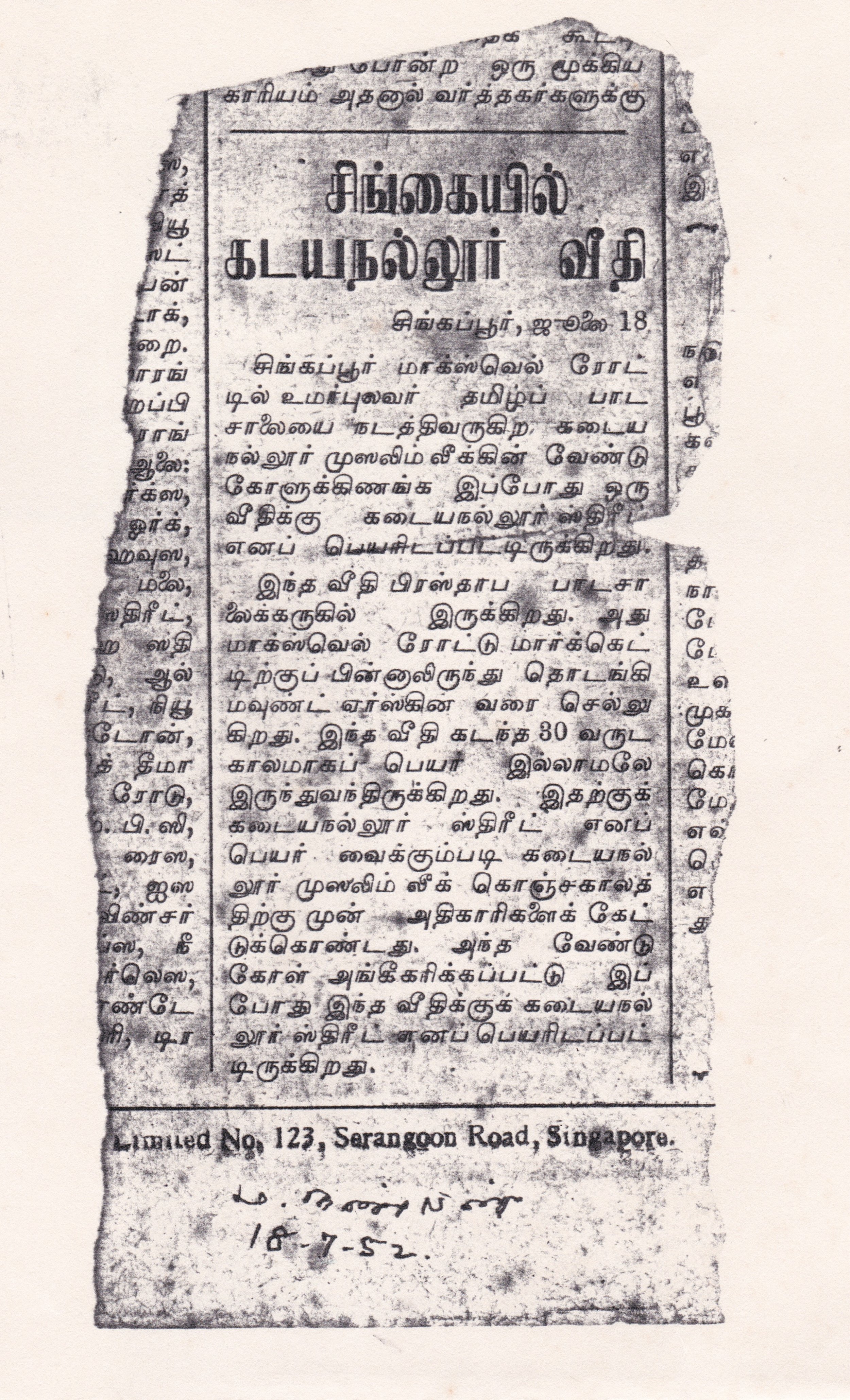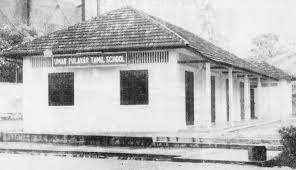OUR STORIES
Our Logo
In 2012, we underwent a transformation, unveiling our current logo. Simplicity intertwined with dynamism, it captures the essence of our organisation—an esteemed Indian Muslim socio-religious and welfare institution nestled within the heart of Singapore. Guided by the principles of Islam, our logo boldly showcases a vibrant green Crescent and Star, symbolizing our faith.
The turmeric-colored crescent, symbolizing our deep-rooted heritage in spice trades and vibrant community, extends its benevolent embrace to all with open arms.
Meanwhile, the resolute red hue signifies our unwavering commitment to serving all Singaporeans, transcending race and religion. In doing so, we emulate the profound message imparted by our beloved Prophet Muhammad (pbuh): to serve all of humanity without exception.
Indian Muslim organisation before 1941.
SKML’s First Gen Secretary Mr. A N Maideen is seated on the first row 3rd from left.
The history of SKML dates back to the late 19th century when a group of pioneering leaders actively participated in the establishment of the Muslim Improvement Club in 1926. This marked the organisation's first concerted effort to secure institutional representation and was a crucial milestone in its journey towards providing a platform for the Indian Muslim community in Singapore.
Unfortunately, the Muslim Improvement Club's eventual demise remains unrecorded or unconfirmed. Veteran community members recount that the gradual erosion of its operational integrity, due to the encroachment of certain cultural practices, led to its downfall. This highlights the importance of maintaining a shared cultural identity while embracing diversity within a community.
In 1941, SKML officially registered its presence, securing its place as a prominent organisation representing the Indian Muslim community in Singapore. The Singapore Tenkasi Muslim Welfare Society, which was established a year earlier in 1940, also attained registration during this period. These early years saw the emergence of numerous organisations, each with a distinct character, mirroring the vibrant tapestry of their respective locales.
Unlike the Muslim Improvement Club, which embodied an overarching entity, these organisations incorporated their district, town, or municipality of origin into their organisational identity. This was a reflection of the community's emphasis on strong desire to retain cultural and linguistic identity.
Letter to register Kadayanallur Muslim League as an organisation dated June 1941.
Birth of SKML
In the midst of an ever-changing landscape, Imam Hafiz S.A. Mohamed penned a letter to the Registrar of Societies in June 1941, seeking to register the Kadayanallur Muslim League as an independent entity following the Muslim Improvement Club's (MIC) tenure. The precise dissolution date of the MIC eludes us, but in a cruel twist of fate, World War II commenced a mere two months later, with the Japanese occupation of Singapore commencing in December 1942. Against this backdrop of turmoil, SKML secured its formal approval as an organisation on August 8, 1941—truly, these were trying times indeed.
Within the lines of this letter lie compelling insights. The author astutely acknowledges that our connection to Singapore stretches far beyond the present moment. He cites the presence of 400 Kadayanallur Muslims who settled in Singapore over six decades prior, immersing themselves in its rich tapestry since the 1880s. This enduring association, deeply etched in history, resonates with the registrar who, approving our inauguration on August 8, 1941.
Our landmark in cbd.
In the tapestry of our collective memory, Kadayanallur Street stands as a significant landmark, particularly cherished by the Indian Muslim community. Its name carries a profound tale, interwoven with the lives and events that unfolded within its vicinity. Nestled in the heart of Singapore's bustling Central Business District, the revered Tanjong Pagar District, this street resonates with historical significance.
At the helm of this narrative, we find the indomitable Kadayanallur Muslim League, its office was at no. 72 Tanjong Pagar. The visionary hand of its first General Secretary, Mr. A.N. Maideen, played a pivotal role in bringing forth the Umar Pulavar Tamil School, an educational institution that would later evolve into the esteemed Umar Pulavar Tamil High School—its noble purpose etched into the fabric of Maxwell Road.
Current signage at Maxwell Road vicinity.
Tamil Murasu Article dated 18th July 1952.
It was from the hallowed ground of May 1952 onward that Kadayanallur Street materialized, embracing its rightful place in Singapore's urban tapestry. Within its name, the echoes of a community's journey and the legacy of a cherished institution continue to reverberate, forever etching their mark upon the vibrant streetscape of our beloved city.
Umar Pulavar tamil school
Umar Pulavar Tamil School before it was restructured to become a 3-story concrete structure.
One of SKML's significant contributions to the nation-building endeavor was the establishment of the Umar Pulavar Tamil School in 1946, a period marked by the prevalence of vernacular schools. Originally conducted within the premises of 72 Tanjong Pagar Road, the school later found its permanent residence on Maxwell Road in March 1950. Our astute leaders, recognizing that primary education alone would provide only a rudimentary foundation, embarked upon a herculean task—raising funds to construct a three-story building that would go on to become South East Asia's first Tamil Secondary School.
The importance of this achievement cannot be overstated. The Umar Pulavar Tamil School (UPTS) stands today as a key protagonist in shaping the standard of Tamil usage in modern-day Singapore. Its accomplished alumni, assuming pivotal roles across diverse establishments and sectors, not only played instrumental parts but also actively championed the rightful recognition of the Tamil language as one of Singapore's official languages. Their indelible contributions have left an indomitable mark, leaving no doubt as to the transformative power of UPTS. A comprehensive article on Umar Pulavar awaits, delving into the intricate details of this exceptional institution. its development and the people behind its establishment can be found here.
Wedding Felicitation Ceremony
Indian Muslims today continue the practice of including a "felicitation" segment in their wedding ceremonies and walima gatherings. This involves inviting kin-based organisations to deliver eloquent speeches, a tradition with a rich history but now at risk of losing significance due to improved social mobility.
During weddings, the organisation representatives present their felicitations to the newlyweds and their families in a brief session lasting about 15 minutes. A token gift is offered, followed by a supplication to bless the couple and guests. For funerals, a senior member of the organisation usually delivers a eulogy, a practice that is also losing appeal among the younger generation.
This ceremony must be understood in the context of the mass migration of Tamil Muslims from South India to Singapore. As these immigrants sought support and settlement, Indian Muslim organisations played a crucial role in providing assistance and employment opportunities.
Today, with the community's improved financial and social status, their reliance on these organizations has diminished. The younger generation finds such practices outdated and unrelatable. However, preserving these traditions remains essential for passing on ancestral values.
While felicitations have typically been monolingual (Tamil), a bilingual approach should be considered to accommodate linguistic trends. As with traditional trades and customs, these expressions at milestone events are at risk of disappearing with time. It is now the responsibility of Indian Muslim organisations to review and adapt these traditions to remain meaningful for future generations. Read more about this unique practice in the English edition of “Singapore Tamil Muslims” publication available in the national library.







